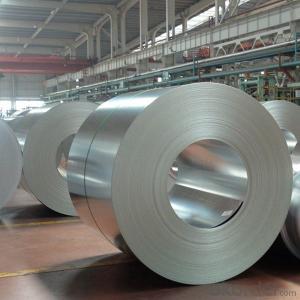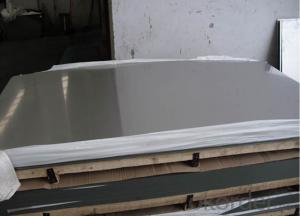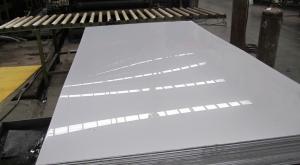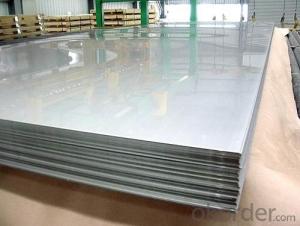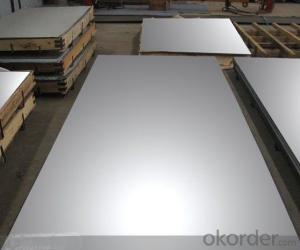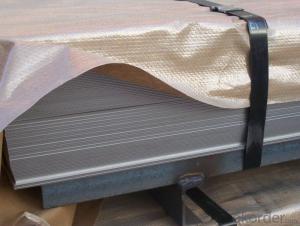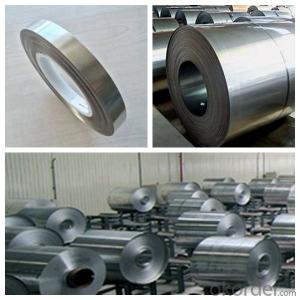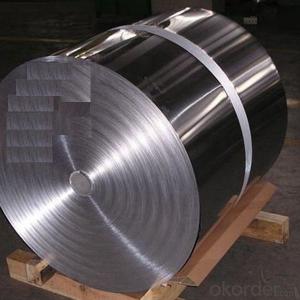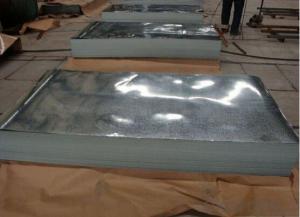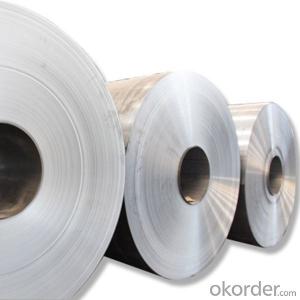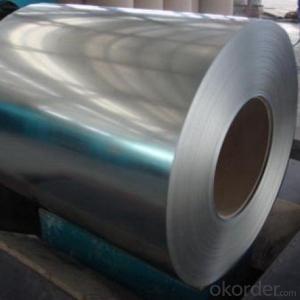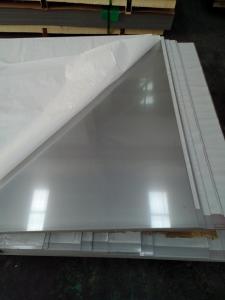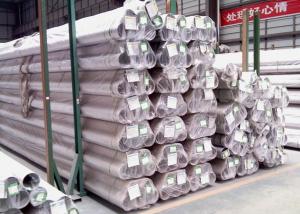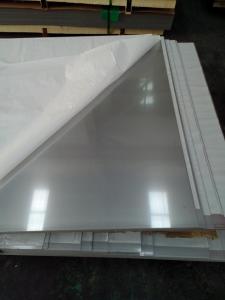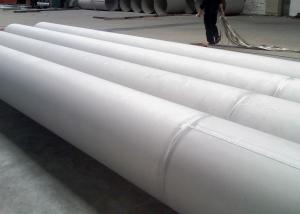Steel Sheet Cold Rolled Stainless Steel Made in China
- Loading Port:
- Shekou
- Payment Terms:
- TT OR LC
- Min Order Qty:
- 20 m.t.
- Supply Capability:
- 200000000 m.t./month
OKorder Service Pledge
OKorder Financial Service
You Might Also Like
Specification
Description for Stainless Steel Coils/Sheets:
Material | 201/202/301/304/304L/310S/316/316L/321/410/420 |
Technique | old Rolled, Cold Drawn, Hot Rolled |
Standard | ASTM,AISI,JIS,GB,DIN,EN |
Thickness | 0.3mm-100mm or as your requirement |
Width | 100mm-3000mm or as your requirement |
Length | 1000mm-10000mm or as your requirement |
Surface Treatment | BA,2B,No.1,No.4,No.8,HL,8K,Brush |
Packing | 1.Export sea worthy package + water proof paper + wooden pallet 2. Max Loading 26.5mt for each 20Gp container 3.Safe loading and fixing Professiona teams 4. Professional shipping line |
Delivery | 25 days after received the 30% deposit of T/T or L/C |
Payment | T/T,30%payment in advance,70%T/T after the copy of B/L or L/c at sight |
Application | Stainless Steel Sheets are widely used in below fields: 1: Construction field, shipping building industry 2: Petroleum and Chemical Industries 3: Food and Mechanical Industries |
Specifications for Stainless Steel Coils/Sheets:
Grade | C ≤ | Si ≤ | Mn ≤ | P ≤ | S ≤ | Ni ≤ | Cr ≤ |
201 | 0.12 | 0.75 | 7.00 | 0.045 | 0.045 | 1.00-1.28 | 13.70-15.70 |
202 | 0.15 | 1.00 | 2.25 | 0.045 | 0.045 | 4.07-4.17 | 14.00-16.00 |
304 | 0.08 | 0.75 | 2.00 | 0.045 | 0.03 | 8.00-11.00 | 18.00-20.00 |
304L | 0.035 | 0.75 | 2.00 | 0.045 | 0.03 | 8.00-13.00 | 18.00-20.00 |
309 | 0.15 | 0.75 | 2.00 | 0.045 | 0.03 | 12.00-15.00 | 22.00-24.00 |
310S | 0.08 | 1.50 | 2.00 | 0.045 | 0.03 | 19.00-22.00 | 24.00-26.00 |
316 | 0.08 | 1.00 | 2.00 | 0.045 | 0.03 | 10.00-14.00 | 16.00-18.00 |
316L | 0.035 | 0.75 | 2.00 | 0.045 | 0.03 | 10.00-15.00 | 16.00-18.00 |
321 | 0.04-0.10 | 0.75 | 2.00 | 0.045 | 0.03 | 9.00-13.00 | 17.00-20.00 |
405 | 0.08 | 0.75 | 1.00 | 0.045 | 0.03 | 0.06 | 11.5-13.5 |
409 | 0.089 | 1.00 | 1.00 | 0.045 | 0.05 | 0.06 | 10.50-11.75 |
410 | 0.15 | 0.75 | 1.00 | 0.045 | 0.03 | 0.06 | 11.5-13.5 |
420 | 0.16-0.25 | 1.00 | 1.00 | 0.040 | 0.03 | 0.06 | 12.00-14.00 |
430 | 0.12 | 0.75 | 1.00 | 0.045 | 0.03 | 0.06 | 16.00-18.00 |
Features of Stainless Steel Coils
(1)Good ductility
(2)Good corrosion resistance
(3)Excellent abrasion resistance and fatigue strength
(4)Good weldability
(5)Oxidation resistant performance
(6)Excellent in high temperature
Detail picture for Stainless Steel Coils/Sheets
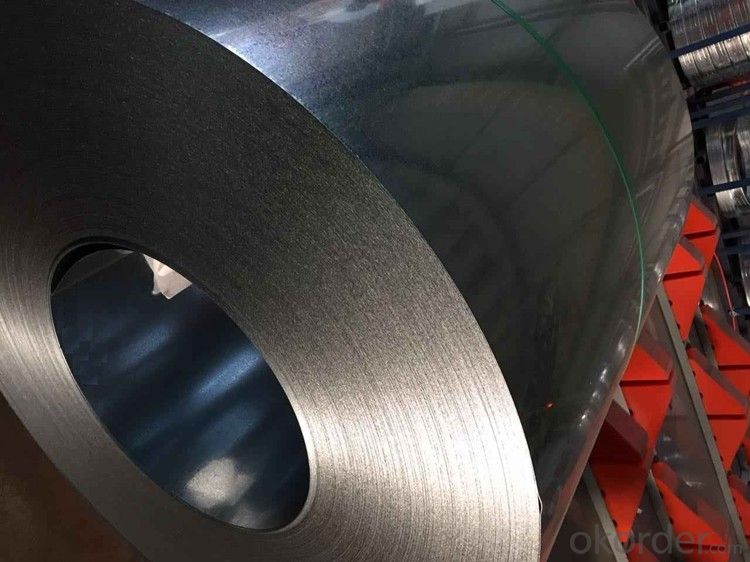
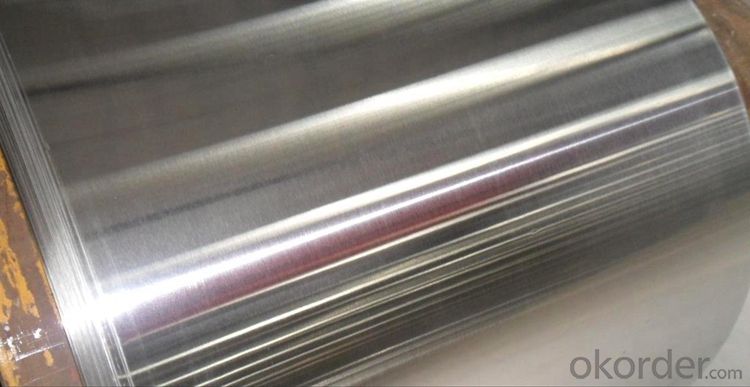
Packaging & Delivery for Stainless Steel Coils/Sheets:
Packaging Detail Standard export packing or following customer's demand
Delivery Time: Within 30-40 days after deposit or according to the order quantity
FAQ for Stainless Steel Coils/Sheets:
Q: How can I get the samples?
A: If you need some samples to test ,please pay for the transportation freight of samples and our samples are free for you.
Q: How can I get your price list?
A: Please send us your email or fax and order information – Quantity, Specification (steel type, thickness, width, surface finish), then I can send you the price list.
- Q: Are stainless steel sheets suitable for elevator handrails?
- Yes, stainless steel sheets are suitable for elevator handrails. Stainless steel is a popular choice for handrails in elevators due to its durability, corrosion resistance, and aesthetic appeal. Elevator handrails are subject to constant use and exposure to various environmental factors, such as moisture and fingerprints. Stainless steel is highly resistant to corrosion, ensuring the longevity and maintenance-free operation of the handrails. Additionally, stainless steel has a sleek and modern appearance that complements the overall design of elevators. Its smooth surface is easy to clean and maintain, making it a hygienic choice for handrails in public spaces. Overall, stainless steel sheets are an excellent material choice for elevator handrails.
- Q: What is the thickness range of stainless steel sheets?
- The thickness of stainless steel sheets can differ based on the grade and purpose. Generally, they come in thicknesses ranging from 0.4mm to 6mm. Moreover, there are specific stainless steel sheets, like foil sheets, which are even thinner, measuring as fine as 0.02mm. Conversely, for robust applications, stainless steel sheets can be as thick as 50mm or beyond. Ultimately, the desired thickness of a stainless steel sheet hinges on the intended use, structural demands, and aesthetic preferences.
- Q: How do you prevent galvanic corrosion on stainless steel sheets?
- To prevent galvanic corrosion on stainless steel sheets, there are several measures that can be taken: 1. Use compatible materials: Ensure that any other metals or materials in contact with the stainless steel sheets are also corrosion-resistant. Avoid coupling stainless steel with dissimilar metals, especially those with a higher electrochemical potential difference, as this can accelerate galvanic corrosion. 2. Insulate and isolate: Create a physical barrier or insulating layer between the stainless steel sheets and any dissimilar metals. This can be achieved through the use of gaskets, seals, or non-conductive coatings. By preventing direct contact between the stainless steel and other metals, the risk of galvanic corrosion is reduced. 3. Proper installation: During installation, ensure that stainless steel sheets are properly grounded and separated from other metals. This helps to minimize the potential for galvanic corrosion by reducing the flow of electrical currents between dissimilar metals. 4. Regular maintenance: Regularly inspect and clean stainless steel sheets to remove any contaminants or foreign materials that could contribute to galvanic corrosion. This includes removing any rust, scale, or deposits that may have formed on the surface. 5. Cathodic protection: Consider implementing a cathodic protection system, such as sacrificial anodes or impressed current systems, to provide an additional layer of protection against galvanic corrosion. These systems work by introducing a sacrificial metal that corrodes in place of the stainless steel, effectively preventing corrosion of the stainless steel sheets. By taking these preventative measures, it is possible to significantly reduce the risk of galvanic corrosion on stainless steel sheets and extend their lifespan.
- Q: Can stainless steel sheets be used for brewery piping?
- Yes, stainless steel sheets can be used for brewery piping. Stainless steel is a popular material choice for brewery piping due to its corrosion resistance, durability, and hygienic properties. It can withstand the harsh chemicals and high temperatures involved in the brewing process, ensuring the integrity and cleanliness of the piping system. Additionally, stainless steel is easy to clean and maintain, making it ideal for use in breweries where cleanliness and sanitation are paramount. Overall, stainless steel sheets are a reliable and suitable option for brewery piping.
- Q: How do I install stainless steel sheets?
- In order to install stainless steel sheets, there are a few steps that need to be followed: 1. Begin by accurately measuring the area where the stainless steel sheets will be installed. Use a tape measure to determine the length and width of the space. Furthermore, ensure that the surface is clean, dry, and devoid of any debris or contaminants. 2. If the stainless steel sheets you have acquired are not already pre-cut to the desired size, you will need to cut them to fit the area. Utilize a metal cutting saw, such as a circular saw or an angle grinder with a metal-cutting blade, to achieve precise cuts. As you cut, it is imperative to wear safety goggles and work gloves to protect yourself from any flying debris. 3. Depending on your preference, you can either use an adhesive or screws to secure the stainless steel sheets to the surface. If you opt for adhesive, apply a thin layer of construction adhesive to the back of the sheet and firmly press it onto the surface. For added security, you can also use screws to fasten the sheets. Begin by pre-drilling holes into the stainless steel sheets, then screw them into place using stainless steel screws. 4. Once the sheets are in position, ensure the edges are secure by utilizing trim pieces or stainless steel molding. This will provide a polished and finished appearance to your installation, while also offering additional protection to the edges of the sheets. 5. After the installation is complete, clean the stainless steel sheets using a mild detergent and a soft cloth. Avoid using abrasive cleaners or scrub brushes, as they can cause scratches on the surface. Regular cleaning and maintenance are essential for preserving the appearance and longevity of the stainless steel sheets. It is important to remember that if you have any uncertainties regarding the installation process, it is always advisable to consult a professional or seek guidance from the manufacturer of the stainless steel sheets you have purchased.
- Q: Are stainless steel sheets resistant to pitting and crevice corrosion?
- Yes, stainless steel sheets are generally resistant to pitting and crevice corrosion. Stainless steel is known for its high corrosion resistance due to the presence of chromium, which forms a passive oxide layer on the surface of the material, protecting it from corrosion. This oxide layer acts as a barrier, preventing the penetration of corrosive substances that could cause pitting and crevice corrosion. However, it is important to note that the resistance to pitting and crevice corrosion can vary depending on the specific grade of stainless steel and the environmental conditions in which it is exposed. Some grades of stainless steel, such as 316 or 317, have enhanced resistance to these types of corrosion. In addition, certain aggressive environments, such as those with high chloride concentrations or acidic conditions, can still pose a risk to stainless steel and may require the use of more corrosion-resistant grades or additional protective measures. Overall, stainless steel sheets are highly resistant to pitting and crevice corrosion, but the specific grade and environmental factors should be considered for optimal performance.
- Q: What is the water absorption rate of stainless steel sheets?
- The water absorption rate of stainless steel sheets is extremely low, as stainless steel is a non-porous material that does not readily absorb water.
- Q: What is the strain hardening exponent of stainless steel sheets?
- The ability of stainless steel sheets to increase their strength and hardness as they undergo plastic deformation or strain is referred to as the strain hardening exponent. This exponent measures how the stress-strain curve of the material changes as deformation increases. Typically, stainless steel sheets have a strain hardening exponent ranging from 0.2 to 0.4. This value signifies that the material experiences a moderate increase in strength and hardness when subjected to plastic deformation. A higher strain hardening exponent indicates a greater resistance to deformation and better ability to maintain its shape under external forces. The strain hardening exponent plays a crucial role in engineering applications as it impacts the material's formability, ductility, and resistance to deformation. Materials with higher strain hardening exponents are preferred in industrial processes like sheet metal forming or cold working as they offer enhanced work-hardening properties. However, excessively high strain hardening exponents can lead to issues such as cracking or material failure. It is important to acknowledge that the strain hardening exponent can vary depending on the specific grade and composition of the stainless steel alloy. Different stainless steel alloys may exhibit distinct strain hardening behaviors, necessitating consideration of the material's properties and specifications when determining the strain hardening exponent for a particular stainless steel sheet.
- Q: Are stainless steel sheets suitable for pharmaceutical applications?
- Yes, stainless steel sheets are suitable for pharmaceutical applications. Stainless steel is resistant to corrosion, easy to clean, and has excellent hygienic properties, making it ideal for use in pharmaceutical manufacturing processes where hygiene and cleanliness are crucial. Additionally, stainless steel sheets can withstand high temperatures and pressures, making them suitable for various pharmaceutical equipment and storage containers.
- Q: What is the maximum thickness of stainless steel sheets for bending?
- The maximum thickness of stainless steel sheets for bending can vary depending on the specific grade and type of stainless steel being used. In general, stainless steel sheets up to around 6mm thick can be easily bent, while thicker sheets may require specialized equipment and techniques for successful bending.
Send your message to us
Steel Sheet Cold Rolled Stainless Steel Made in China
- Loading Port:
- Shekou
- Payment Terms:
- TT OR LC
- Min Order Qty:
- 20 m.t.
- Supply Capability:
- 200000000 m.t./month
OKorder Service Pledge
OKorder Financial Service
Similar products
Hot products
Hot Searches
Related keywords
